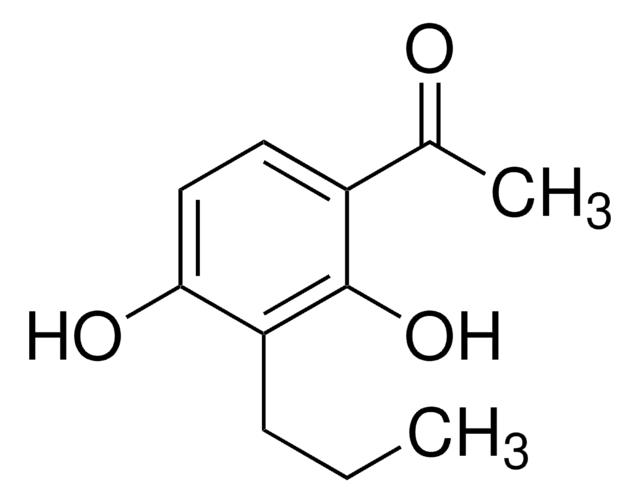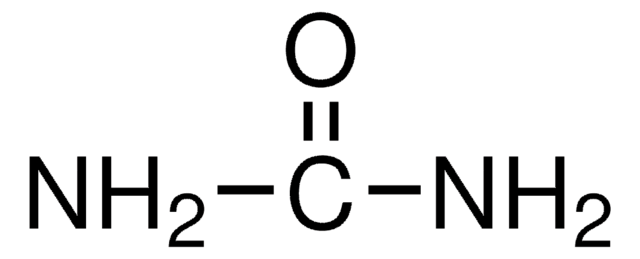481521
Hexaamminecobalt(III) chloride
99%
동의어(들):
Cobalt hexammine trichloride, Hexaamminecobalt trichloride
로그인조직 및 계약 가격 보기
모든 사진(2)
About This Item
Linear Formula:
[Co(NH3)6]Cl3
CAS Number:
Molecular Weight:
267.48
EC Number:
MDL number:
UNSPSC 코드:
12352302
PubChem Substance ID:
NACRES:
NA.23
solubility:
H2O: slightly soluble(lit.)
ethanol: insoluble(lit.)
ethanol: insoluble(lit.)
추천 제품
일반 설명
Hexaamminecobalt(III) chloride can be used as a starting material to prepare various Co-based nanomaterials such as Co-Sb nanoalloys, Co nanocapsules, bimetallic nanoparticles, and Co-polymer nanocomposites. These materials are applied in the field of catalysis, dielectrics, and renewable energy conversion devices.
애플리케이션
- Rhenium (VII) compounds as inorganic precursors for the synthesis of organic reaction catalysts: Investigates the potential of Hexaamminecobalt(III) chloride as a replacement for commercial products in catalyzing organic reactions, highlighting its role in synthetic chemistry (K Leszczyńska-Sejda et al., 2019).
- In situ formation of a molecular cobalt (iii)/AgCl photocatalyst for visible-light water oxidation: Discusses the synthesis and application of Hexaamminecobalt(III) chloride in forming a novel photocatalyst for water oxidation, a critical process in solar energy utilization (H Mogi et al., 2021).
신호어
Danger
유해 및 위험 성명서
Hazard Classifications
Aquatic Chronic 4 - Carc. 2 - Resp. Sens. 1 - Skin Sens. 1
Storage Class Code
11 - Combustible Solids
WGK
WGK 3
Flash Point (°F)
Not applicable
Flash Point (°C)
Not applicable
개인 보호 장비
dust mask type N95 (US), Eyeshields, Gloves
P M Littlewood et al.
Brain research, 445(1), 165-170 (1988-03-29)
Intracellular injection of hexamminecobaltic chloride into a neurone causes characteristic changes to the structure of its mitochondria. This provides a simple technique to label neuronal profiles for examination of their ultrastructure. Synaptic structures are not affected by hexamminecobaltic ions.
Pinpinat Malaikaew et al.
Journal of photochemistry and photobiology. B, Biology, 103(3), 251-255 (2011-05-03)
In this study, a new small-molecule-based reagent was designed to recognize and bind to specific site in protein. A new pyrenyl probe, d-biotinyl-1(1-pyrene)methylamide (Py-biotin) was designed and synthesized by coupling of d-biotin to 1(1-pyrene)methylamine hydrochloride. Binding studies and site-specific photocleavage
Michael G Poirier et al.
Journal of cellular biochemistry, 85(2), 422-434 (2002-04-12)
We show that the chromatin in mitotic chromosomes can be drastically overcompacted or unfolded by temporary shifts in ion concentrations. By locally 'microspraying' reactants from micron-size pipettes, while simultaneously monitoring the size of and tension in single chromosomes, we are
T Allers et al.
Nucleic acids research, 28(2), e6-e6 (1999-12-22)
The Holliday junction is a central intermediate in genetic recombination. This four-stranded DNA structure is capable of spontaneous branch migration, and is lost during standard DNA extraction protocols. In order to isolate and characterize recombination intermediates that contain Holliday junctions
D C Tessier et al.
Analytical biochemistry, 158(1), 171-178 (1986-10-01)
Despite its unique ability to ligate single-stranded DNA molecules, T4 RNA ligase has so far seen little use in molecular biology due to long reaction times, modest yields, and apparent inability to promote ligation of long oligodeoxyribonucleotides. We describe here
문서
Plasmonic nanoparticles have unique optical properties that can be tailored to suit a variety of applications in the biotechnology1–8 and electronics9–16 industries.
Plasmonic nanoparticles have unique optical properties that can be tailored to suit a variety of applications in the biotechnology1–8 and electronics9–16 industries.
자사의 과학자팀은 생명 과학, 재료 과학, 화학 합성, 크로마토그래피, 분석 및 기타 많은 영역을 포함한 모든 과학 분야에 경험이 있습니다..
고객지원팀으로 연락바랍니다.









